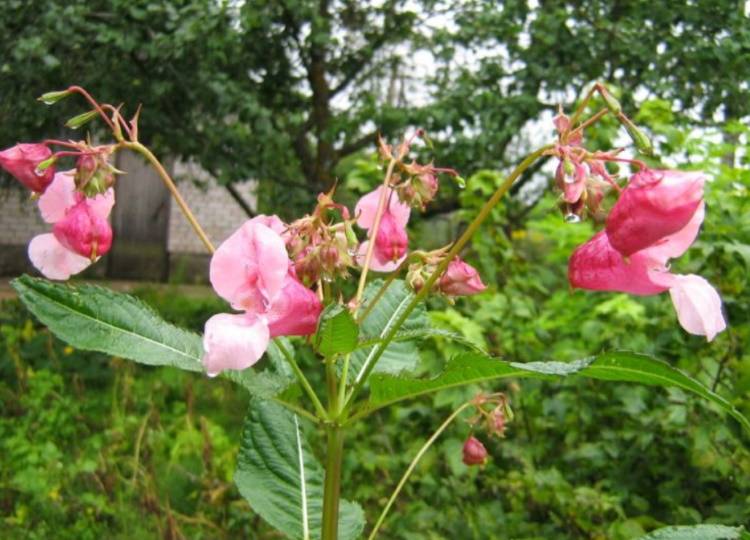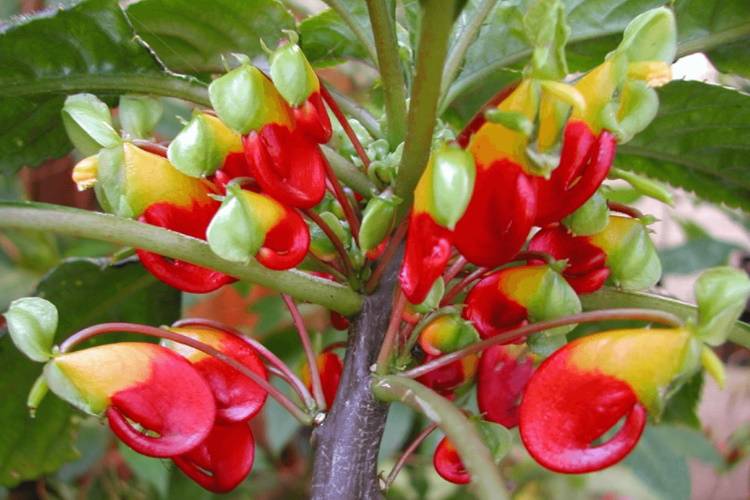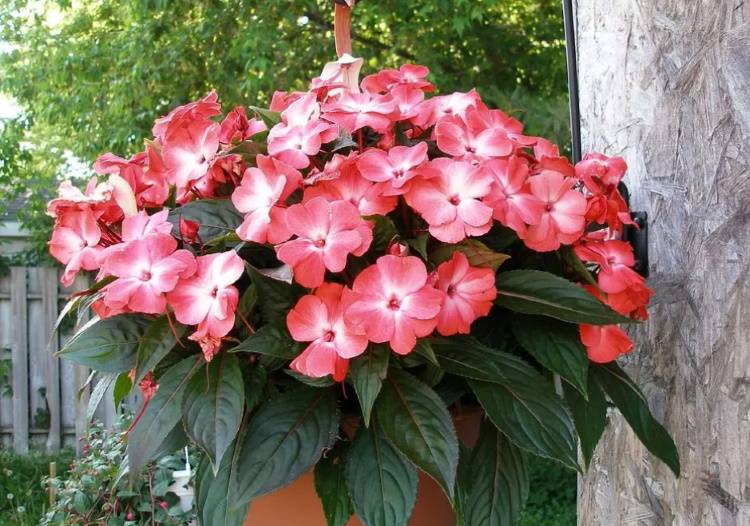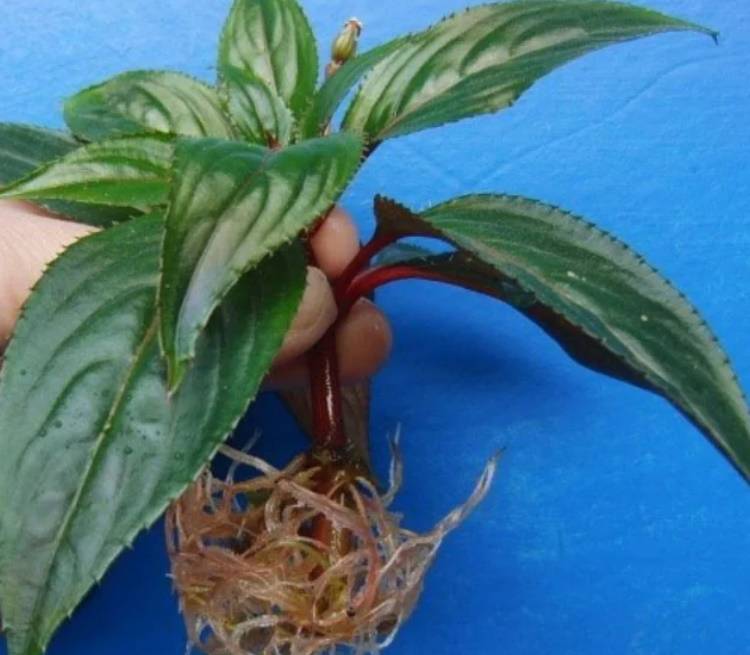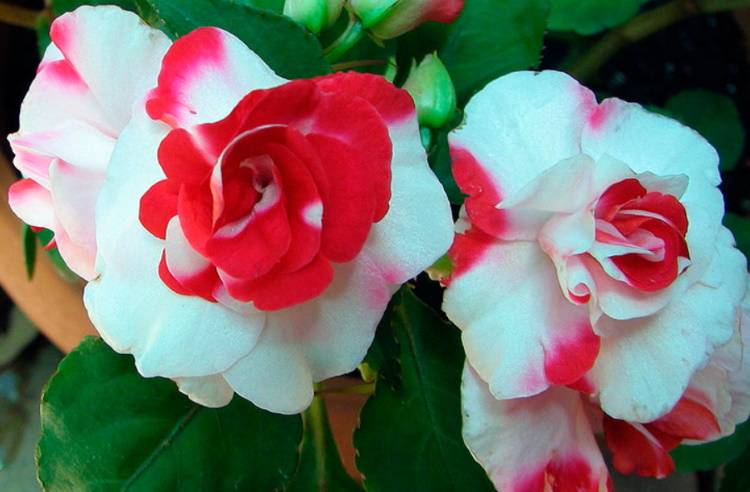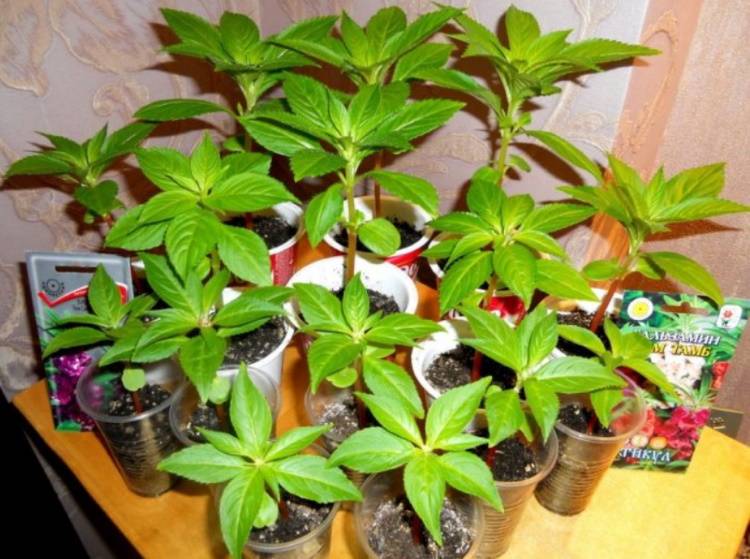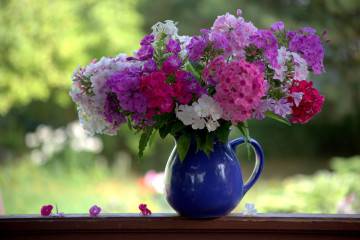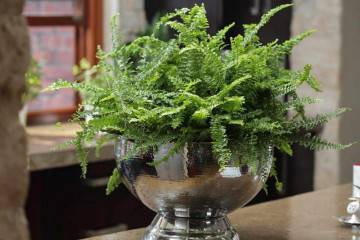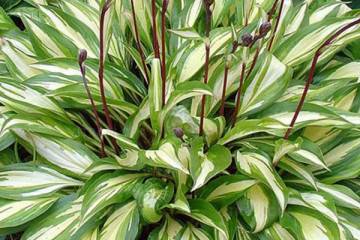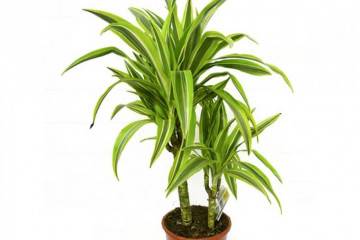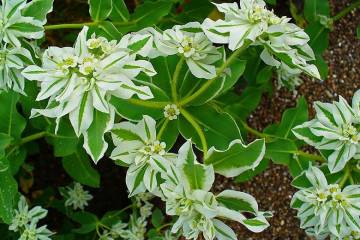Indoor balsam - types and varieties, how to care
Content:
Many people from childhood are familiar with balsams as bright indoor flowers, which are most often called lights. These flowers in tsarist Russia were valued not only for their beautiful appearance. The balsam pot was once brought to the newlyweds' home as a plant that enhances the masculine strength of the groom.
The history of indoor balsam
The first balsamic bushes came to Europe in the 16th century. Bright tropical moisture-loving flowers were brought as a gift to the Queen of England, Elizabeth I, but they were appreciated and began to be cultivated as indoor and garden plants in Germany and France. Scientists have identified varieties of these flowers as a separate family, Balsaminaceae. It consists of two kinds. Indoor balsam belongs to the genus Impatiens (Impatiens).
In the warm regions of the European continent, the alien southern guests over time turned into full-fledged hosts. Now balsams have spread throughout Europe and grow not only in gardens and on window sills, but also as wild herbs in humid forests, on the banks of rivers. In the forests of Siberia, a close relative of indoor flowers, forest balsam, grows.
In Russia, various types of balsam flowers began to be grown in the 19th century. Vanka wet - this is the name that these flowers wore at that time in the landlord and peasant environment. The popular name for plants is associated with their ability to release moisture droplets through the aquatic stomata of leaves. A balsam flower growing in a shaded place, unable to evaporate water naturally during fogs during high humidity before rains, opens channels along the edges of the leaves, into which it directs excess liquid for it.
The mechanism of evaporation of water through the leaves is called gutta (from the word "drop" - "gutta"). Together with moisture during gutting Vanka, wet balsam releases mineral salts and carbohydrates, which, when dry, remain on the edges of the leaves and acquire a sweetish taste that attracts ants. Thus, tropical plants, not only balsams, distract pests from flower nectar, which remains for pollinating insects.
Varieties of indoor plants of the Balsaminaceae family
About 500 species of plants are included in the genus of balsamic touch-me-nots. Flowers of this genus have adapted to their own reproduction by instantly opening the fruit pod and scattering seeds. This process spontaneously occurs after the maturation of the testes. The same thing happens after any touch of ripe fruit. Thus, representatives of Impatiens strive to reproduce due to the fact that they throw their seeds on animals, birds, which carry them far from the mother flower.
The most popular representatives of indoor balsam are:
- Hawker's balsam (Impatiens Hawkeri) belongs to shade-tolerant plants. Propagated vegetatively by cuttings and seeds. Simple traditional inflorescences with a diameter of 6-8 cm are painted in red, pink, white, crimson, purple, variegated shades;
- Waller's balsam, or Waller (Impatiens Walleriana) has many hybrid varieties, among them there are varieties of balsams with double flowers Cherry Blush and Blitz Red;
- Niamey balsam (Impatiens Niamniamensis) is a flower that was brought to Europe from Africa. Inflorescences of this species are shaped like a narrow curved jug or horn, painted in shades of yellow, red or yellow-red.
Balsam: home care
In nature, tropical flowers grow in warm, humid climates in diffused light under the cover of a green mass of tall trees. Balsamic bushes, strewn with bright inflorescences, look very impressive. But these plants are very vulnerable, because they have fragile branches that break in nature under strong gusts of wind, and at home, even with not very strong pressure on the stem. It is believed that this touchy quality makes it difficult to care for indoor balsams at home.
But balsams use this weakness to their advantage. The stems quickly heal wounds, and the cuttings root well in the place where the wind blows them, grow roots even in clean water. Florists also actively use the adaptability of flowers to vegetative propagation when replanting old bushes and growing young plants.
Site and soil selection
For growing flowers of the Balsaminaceae family in an apartment or house, a place with sufficient lighting and warm air is allocated. In summer, it can be a loggia or a balcony facing the south, southeast, east sides. For perennials, which during the warm season are taken out with the pot to the garden, outside, or transplanted with a whole lump of earth into the open ground, they choose shaded, wind-protected areas of land.
The air temperature during this period should not fall below 12 ° C. The optimum temperature for keeping balsam plants is 20-25 ° C. Flowers need neutral or slightly acidic loose soil. A mixture of sod and deciduous soil is used with the addition of peat, sand, humus. A combination of the listed components is used in a ratio of 2: 2: 2: 2: 1, that is, humus should be the least. This is due to the fact that touch-me-nots will bloom together in soil with a moderate amount of nutrients.
Selection of containers for planting, watering, spraying
Balsams in nature have a branched root system that allows the shoots to spread over long distances and form bushes. The plant will not bloom until its roots take up a certain amount of land. Therefore, for growing young plants from cuttings or seedlings, for transplanting adult bushes, deep containers of small diameter with drainage holes are chosen. The flower grower will see a blooming touchy only when the earthy clod is completely entwined with roots.
Balsamic plants need abundant and frequent watering with warm, settled water.But watering should be carried out in such a way that the water does not stagnate in the pot. During watering, water is poured at the root. After the water has soaked all the soil and poured out of the bottom holes of the pot, the pot is placed in a pan in its permanent growing area.
In the warm season, the root part of the soil in pots must be constantly moistened. In winter, the plants are watered after the topsoil dries 2-3 mm. In summer and winter, plants need moist air and regular spraying of stems and leaves.
Pruning, transplanting, feeding
Cuttings and touchy saplings that have taken root in a flower pot quickly increase the root system, bloom, and deplete the soil. When the root filaments begin to crawl out of the drainage holes of the pot, the leaves curl and dry, it is time to select a larger flowerpot. Plants need a transplant not only in order to further grow roots and vegetative organs, but also to replace the soil with a more nutritious one.
Balsams are transplanted when they enter the period of preparation for winter dormancy - in late autumn or early spring. A few days before transplanting, the flower stems must be cut to half their length. The cuttings can be used as cuttings and placed in water to grow root shoots. Thus, you can root and propagate any type of balsamic. After the stems have healed the wounds, they begin to prepare new pots and soil. The diameter of the flowerpot should be 1.5 cm larger than the previous one.
The containers must be treated with a pink solution of potassium permanganate, the earthen mixture must be calcined in the oven or microwave to avoid contamination of the flowers with fungal and viral infections. Additionally, 2-3 days before the start of transplantation, the soil is spilled with a solution of phytosporin M for flowering plants. In any case, the transplant should be carried out in moist soil. An earthen ball is also spilled in a pot with a flower intended for transplanting.
Prepared new pots are filled by a quarter with drainage material, half with soil mixture. Pots with transplanted bushes are placed on their side and slowly scrolled several times. This is necessary to separate the earthen lump with plant roots from the sides. The balsam bush is taken out of the old pots, the earth is not shaken off from the roots. The flower is placed in the center of a new flowerpot, the voids are sprinkled with soil mixture.
Around the central trunk in the root zone, the soil is slightly pressed down and watered. The container with the flower is placed in a warm and bright room, into which direct sunlight does not fall.
Top dressing of balsams is carried out quite rarely - 1 time within 30-40 days. Complex preparations for flowers containing basic micro and macro elements are used as fertilizers. You can use means for feeding Saintpaulias. In winter, during the dormant period, when the touch-sensitives do not bloom, the plants are not fertilized.
How to care for balsam during flowering
The transplanted plants can lay buds as early as 3 weeks after the procedure. The duration of flowering depends on the conditions created for the flower. Plants should grow in moderate light, at temperatures no lower than 20 ° C. The soil in the flower bed must be constantly moistened. Plants should not grow green mass uncontrollably. Long shoots must be pinched in order for lateral shoots to grow, on which flower stalks are mainly formed.
All plants can bloom all year round without a cold dormant period, but the intensity of flower growth will decrease in the second year. Therefore, experienced flower growers from November to February take balsam pots to rooms where the air temperature does not exceed 12 ° C, and reduce watering to 1 time in 2 weeks. At the same time, they observe the bushes: if the leaves begin to droop, the plants are watered.
Reproduction methods
At home, balsamic ones are propagated using cuttings and seeds. Non-professional growers rarely use their own seed material, because in flower shops you can buy already tested and calibrated balsam seeds. Sowing is carried out at any time, starting from the end of February.
Seeds are sown on the surface of moist soil in mini greenhouses, covered with transparent glass or plastic. Seeds germinate in the light, in warmth, on constantly moist soil after 15-20 days. You can transplant seedlings after 3-4 real leaves appear.
Cutting is the most common way to grow a new plant bush. Cuttings are cut to a length of about 10 cm, which should have at least 2 internodes. Rooted in a transparent container with rain or melt water, to which a few drops of a root formation stimulator are added, or in wet sand under a glass cover.
Problems with growing balsams
Balsams, like many indoor plants, suffer from temperature changes, dry air, direct sunlight. The list of insects from which flowers need to be protected include aphids, whiteflies and spider mites, which are fought with the help of insecticides.
Plants need to be treated not only from larvae and eggs of pests, but also from putrefactive formations to which they are susceptible, because they cannot grow in dry soil. Modern biological products do an excellent job with root rot, powdery mildew, gray rot on the leaves.
The main condition for growing blooming indoor balsams at home is regular and attentive flower care. If the grower has the time and desire for this, it means that a beautiful plant will always stand on the windowsill in his house. And it doesn't matter what they call him - balsam, light, touchy or wet Vaska.

